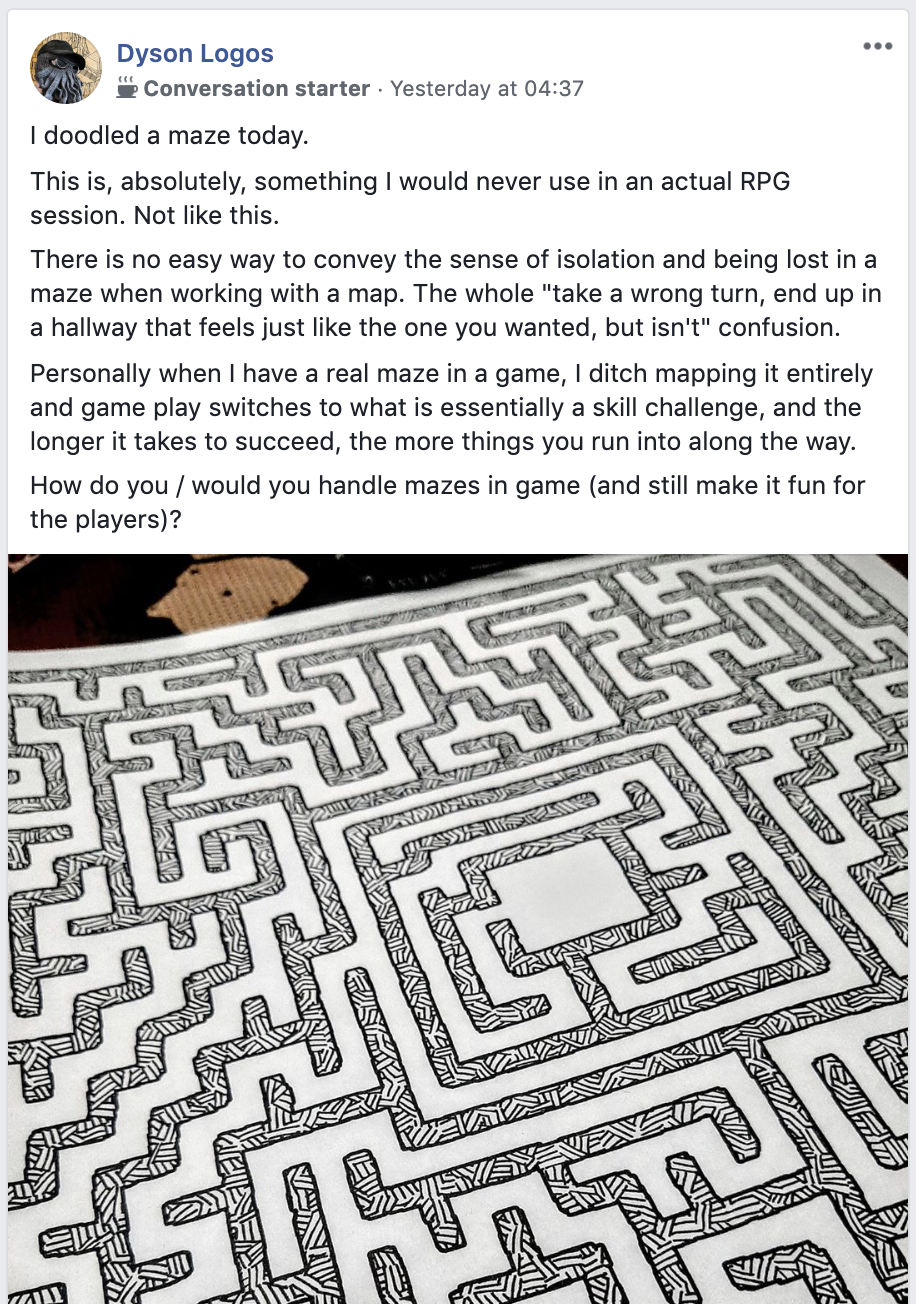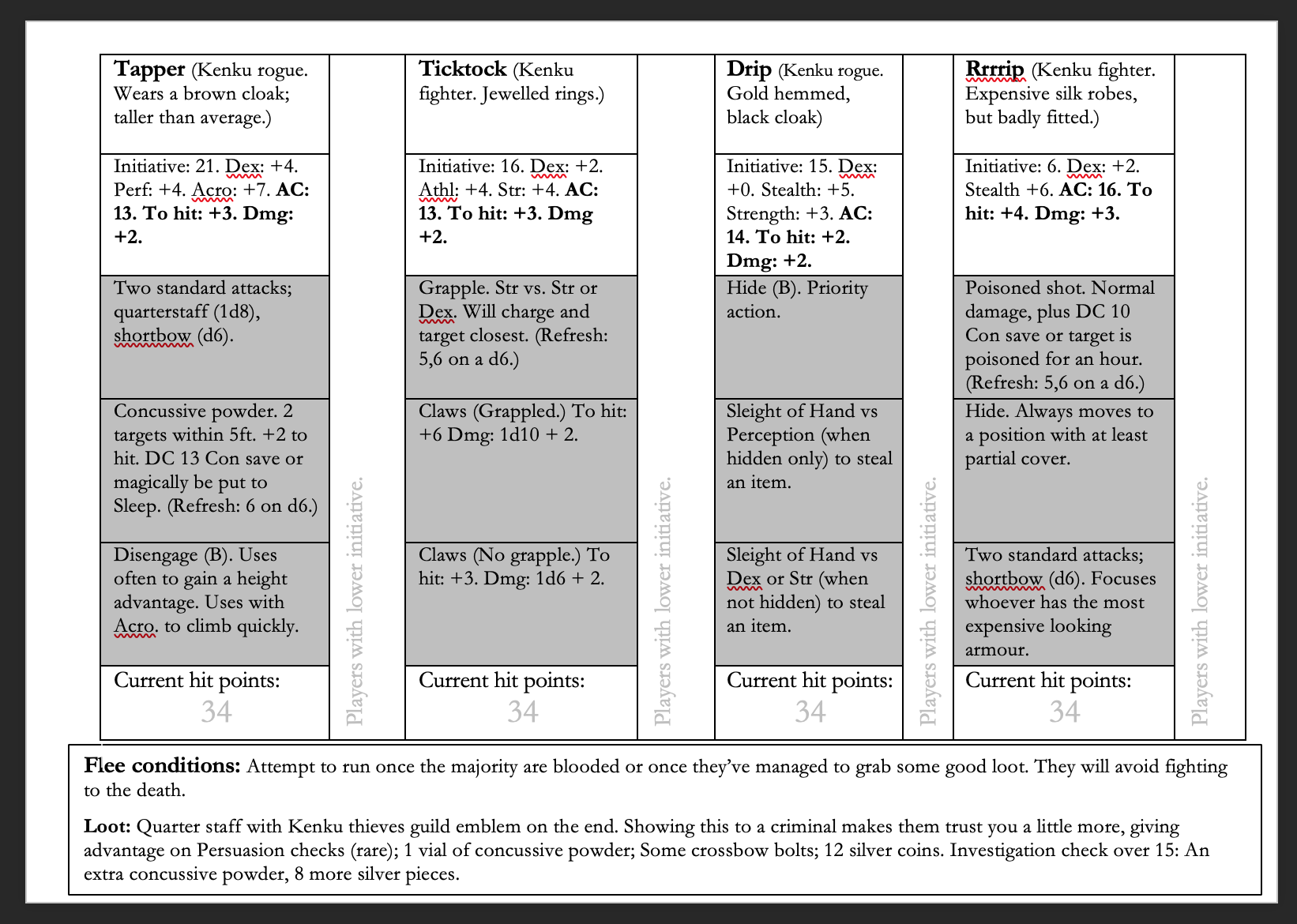
I’ve never been in an adventure with a maze. A dungeon crawl, where the plays have dozens of rooms to clear without a map, are sort of like mazes. Those are rarely designed to get the players lost, or feel trapped, though. It could be because, like Dyson says, that sense of confusion does manifest, but not in a fun way. You’re more like to have your players blindly stumbling from room to room, with the DM grinning with a sense of false achievement.
We could take our pointers from classic text based adventure games, or even point and click adventure games, where you’re given the list of exits from the current scene. The fog of war here is the DM saying, “you’ve not been north, so you don’t quite make out anything in the darkness.” Remembering that, “you have already been south, and you remember that that’s where the gnoll hides.”
An intelligence check might help the players understand the geography of the area, without a map. “With a 13 on your Int check, you are pretty sure that the room to the south is the one you bypassed earlier, when you were travelling past the waterfall.”
Of course, if anyone chooses to be a cartographer, give them an unlabelled version of the map or quickly sketch one out. This kind of play style should be rewarded.
Another feature from a video game that I believe is important is in these situations is travelling from nethack. If a player says “I want to go back to the room with the Naga statue”, I would not make them struggle to remember the way back. I’d definitely list off the rooms they pass through to get there (giving them the opportunity to change their mind and upping the tension), but ten minutes of “okay, I’ll go left. Oh, back then. Right?” isn’t fun.
(An adventure I reviewed a while ago used a maze-as-a-challenge, which was always visible, and the players could figure out how to manipulate it.)
